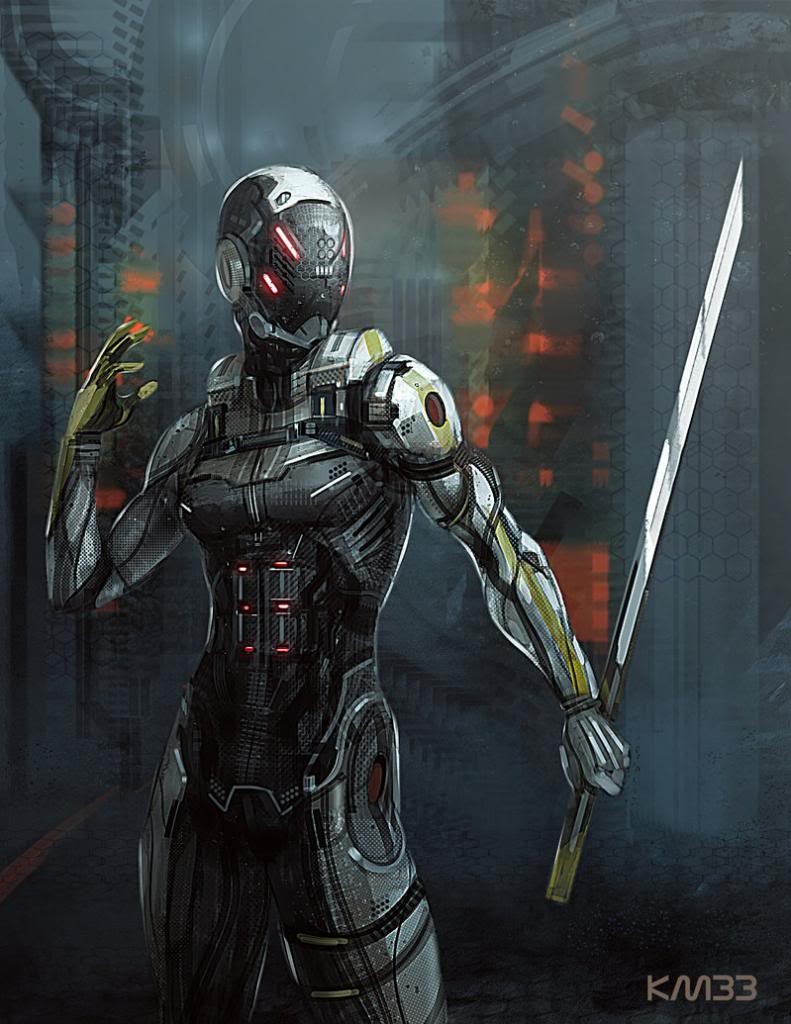
Putting the “Science” in “Science Fiction” – Monomolecular Blades
Science fiction movies and books portray a dazzling variety of imaginative melee weapons, despite their rarity in modern combat. In previous articles I have discussed lightsabers, vibroblades, and chainswords, but this is far from an extensive list. Another melee weapon that is common throughout science fiction is the monomolecular blade. Sometimes shortened to mono-blade, a monomolecular blade is so named because its blade is less than a molecule wide on its cutting edge. In theory this means that a monomolecular weapon could cut through anything with practically no resistance, as it severs molecular bonds rather than tearing away sections of material. Such a weapon would theoretically ignore the hardness of an object, cutting through a sheet of paper or a reinforced steel plate with the same effortlessness. It is no wonder that such a technology would see use in combat.
Another use of monomolecular technology in science fiction is the monofilament or monowire, a wire or cord that has the same thickness, and thus cutting power, of a monomolecular blade. These filaments often appear in science fiction as part of cutting nets or as a bizarre form of ammunition, or form the cutting edge of a monomolecular blade. Some are even used as whip like weapons in their own right. Besides mechanical issues of creating a material strong enough to survive use as such a wire, using a monofilament in this way would be almost suicidal since the wire’s lightness would make it difficult to control and even passing contact could slice through the users body. Because of these issues I will focus on monofilament blades.
Although the idea of a knife that can cut on the molecular level may seem far-fetched the amazing thing is that one form of this technology has existed for more than a millennia, and is actually naturally occurring. Cutting surfaces that are nearly monomolecular in width can be found in glass and obsidian, due to their unique physical structure. When properly shaped obsidian or glass blades are sharper than any steel instrument, and have been reported to be as thin as 3 nanometers across at their cutting edge, while a water molecule is .3 nanometers (or 3 angstroms). Some modern surgeons are beginning to use them instead of conventional scalpels, and in some cases surgeries with obsidian blades can actually be carried out without anesthetic, since the blade cuts so cleanly and quickly that nerves are cut before they can transfer pain signals. The cleanness of the cuts also means that healing is much faster, and each cut is much more precise than with a metal scalpel. Glass and obsidian blades are even used for cutting microscopic sections for use in electron microscopes and other areas where objects must be very small. While these blades are incredibly sharp they are also brittle, and this is one quality that has held them back from becoming widely adopted.
Obsidian knives have been in use for over a thousand years, but a new technology may overshadow them in conventional use. Pioneered by GFD (The Gesellschaft für Diamantprodukte mbH or The Corporation for Diamond Products), this technique involves taking a hard metal blade and coating it in a microscopic layer of artificial diamond. This diamond layer is then exposed to plasma, which sharpens it to a level approaching or matching that of obsidian knives. The metal blade means that there are not brittleness concerns to worry about, and the strength of the diamond coating means that the blades will stay sharp for one thousand times longer than a normal metal blade. These tools are currently very expensive and mainly used in manufacturing, but their potential applications are enormous. These blades are even being considered for use in shaving razors, since a single blade would last for years instead of weeks, and would cut better and more smoothly.
Neither of the technologies I have mentioned are truly monomolecular, but they show that the creation of such blades in the future may be possible. If monoblades are ever created they will have enormous versatility in every manufacturing process, as well as surgery, search and rescue, scientific research, and military use. Only time will tell if such tools are feasible.
By: Kyle Bently
Photo Credits:
http://darkspenthouse.punbb-hosting.com/viewtopic.php?id=1079
http://www.williamgibsonboard.com/topic/4393793103268432?reply=4393793103271322












